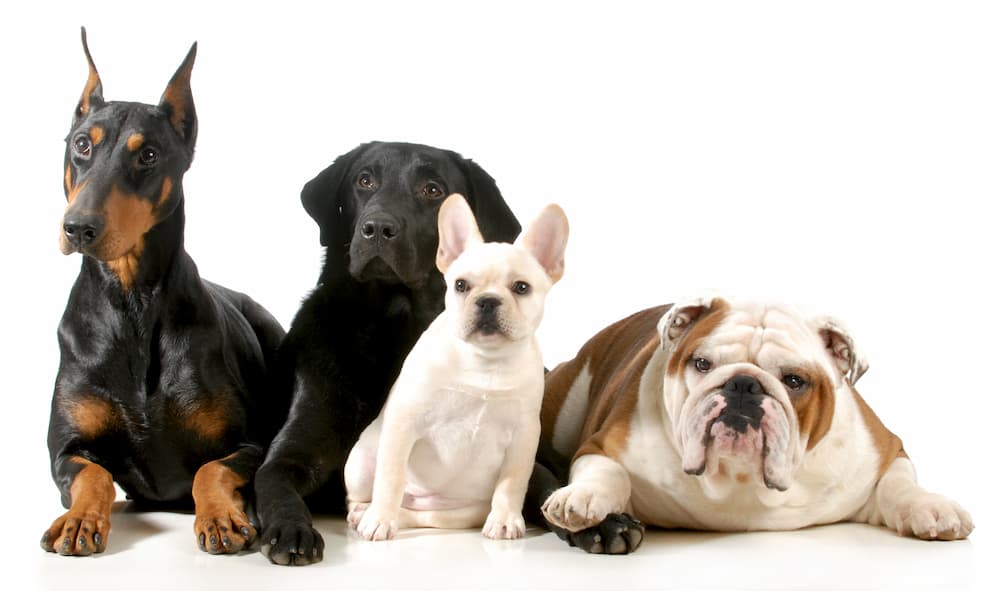Ranking the Top 10 Most Popular Dogs
Google “10 Most Popular Dog Breeds 2023” and the list most often referred to is inevitably the one published annually by the American Kennel Club (AKC). The AKC’s ranking system is based on its registration statistics, a list that seems to vary only slightly from year to year.
Here is the AKC’s last published annual list, reflecting their registration data from 2021:
- Labrador Retriever
- French Bulldog
- Golden Retriever
- German Shepherd
- Poodle
- English Bulldog
- Beagle
- Rottweiler
- German Shorthaired Pointer
- Dachshund
The only differences between 2020 and 2021? The Golden Retriever changed places with the German Shepherd, and the Bulldog and Beagle flip-flopped. Watching for any significant changes to the AKC’s list of popular breeds is about as exciting as watching paint dry. The same four breeds have been in the top four spots since 2017, the year the French Bulldog edged out the English Bulldog. Change comes slowly.
A look at the lists from the 1990s tells a different story. Rottweilers were far more popular than they are today. Cocker Spaniels, Yorkshire Terriers, and Pomeranians enjoyed a heyday. In the 1980s, however, Doberman Pinschers were the darling breed amongst those seeking a good guard dog; Rottweilers did not even make the top 10 list for that decade.
There is one constant, however. The breed on track to be the hands down favorite dog on the planet from now till the end of time is apparently the faithful, friendly Labrador Retriever. Labs have held the top spot on the AKC’s list every single year since 1991.
Ranking Dogs by Characteristics
If you want to add a dog to your household, the smarter breed lists to consult are ones that feature dogs with specific characteristics, such as:
- Best snugglers
- Most reliable guard dogs
- Dogs that are easiest to train
- Best dog breeds for homes with small children
- Most hypoallergenic dogs
- Low maintenance breeds
- Friendliest small dog breeds
- Dog breeds that do not require a lot of exercise
- Dogs that do not require frequent trips to the groomer
Looking at lists like these as opposed to consulting the annual AKC list reveals a far wider variety of breeds, including many that you probably never heard of.
How Did We Get All These Dog Breeds?
Each modern dog breed shares a common ancestor: a now-extinct breed of wolf. Comparing an image of a wolf to one of a Basset Hound or a hairless Chihuahua, however, certainly makes it hard to connect the dots between species.
As a species, wolves are too wild to domesticate, even as pups. Modern attempts to raise newborn wolf pups go off the rails when the wolves reach about eighteen months; they inevitably become too suspicious, fearful, and aggressive to live with humans.
Therefore scientists posit the theory that wolves domesticated themselves, or at least they got the ball rolling in that direction. The theory goes that around 15,000 years ago (or possibly 30,000, depending on who’s telling the story) wolves became attracted to the refuse piles near human settlements.
The more fearful wolves generally kept their distance from humans and bred with one another. Wolves that showed less fear hung out closer to human settlements, enjoying a regular food supply. The wolves that stuck close to human settlements and bred amongst themselves eventually produced a new species genetically predisposed to tolerating humans.
Finally, humans had a more docile wolf that could be domesticated. It turned out to be a win-win for both wolves and humans. Humans benefited from wolves in three important ways:
- Having a canine garbage disposal crew reduced the number of insects and rodents.
- The presence of wolves near a settlement tended to keep away other predators.
- Wolves, being territorial, raised a ruckus when enemies approached, giving humans time to react to threats. Interestingly, barking was probably the first trait humans tried to select for when they began to breed wolves.
Of course, as more information becomes available and perhaps exciting new discoveries are made, theories change. It’s possible that some or all of what we currently believe about the origins of human’s best friend, might change. The question for the ages, is whether 100 or 500 years from now, Labrador Retrievers will still be the most popular dog.
How Many Dog Breeds Exist?
Currently, there are more than 400 recognized distinct dog breeds. The vast majority of breeds are more recent. Early on, humans were not interested in confirmation and cute faces; they bred dogs for behavior traits that would serve a need. Think hunting dogs, herding dogs, and dogs that could pull a loaded sled. There is evidence of sled dogs on a remote Siberian island dating back 9,000 years.
Not until Darwin set off a dog-breeding craze in Great Britain during the Victorian era did we see an explosion of dogs bred for particular appearance traits. Most of the modern breeds we recognize today had their origin during that period.
All of this talk about dog breeds leaves out the most American of all dogs: the mixed breed. Lovingly referred to as Heinz-57 dogs or mutts, they actually surpass the revered Labrador Retriever in popularity. According to a 2021-2022 survey by the American Pet Products Association, only 56% of U.S. dog owners had purebreds.
Choosing the Right Dog for You
Never take this decision of bringing a dog in to your home lightly. Whether you have your heart set on a scrappy shelter dog with an unknown past or an adorable purebred puppy from the most reputable breeder, make sure of your decision before you bring a dog home. Whether it’s a mutt or a Maltese, dogs give their hearts to their people, and they deserve a furever home.
